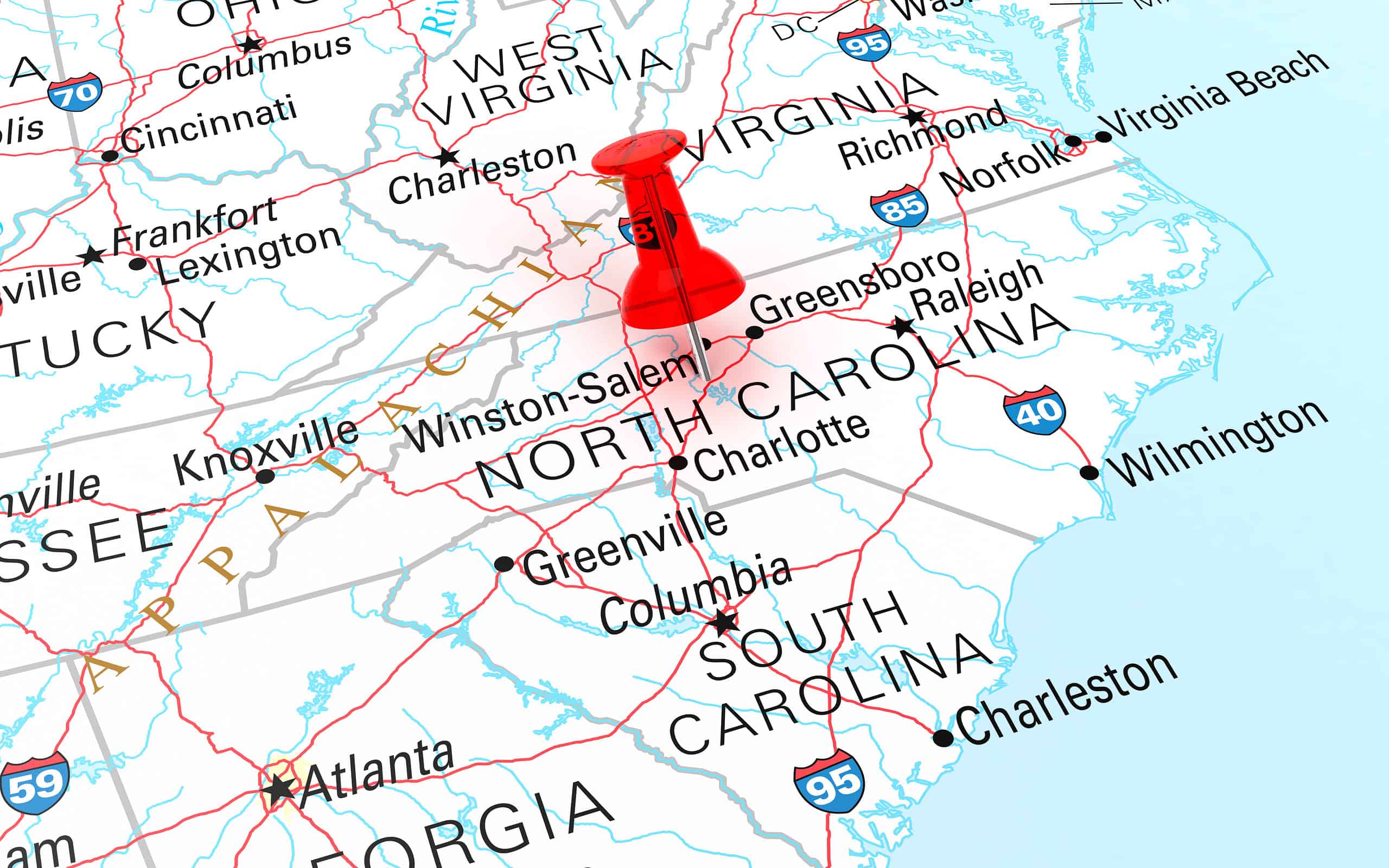When you think of North Carolina, scenes of sunbathing on white sandy beaches or the Wright Brothers embarking on the world’s first flight most likely come to mind. Cold is not something many people associate with the state. Summer temperatures hover around the 90s in much of the Southeast. Although North Carolina and the greater Southeast region are known for having a humid, subtropical climate, parts of the Tar Heel State are surprisingly chilly year-round. It is so cold, in fact, that the five coldest places in North Carolina will send shivers down your spine.
How North Carolina’s Geography Affects Its Weather
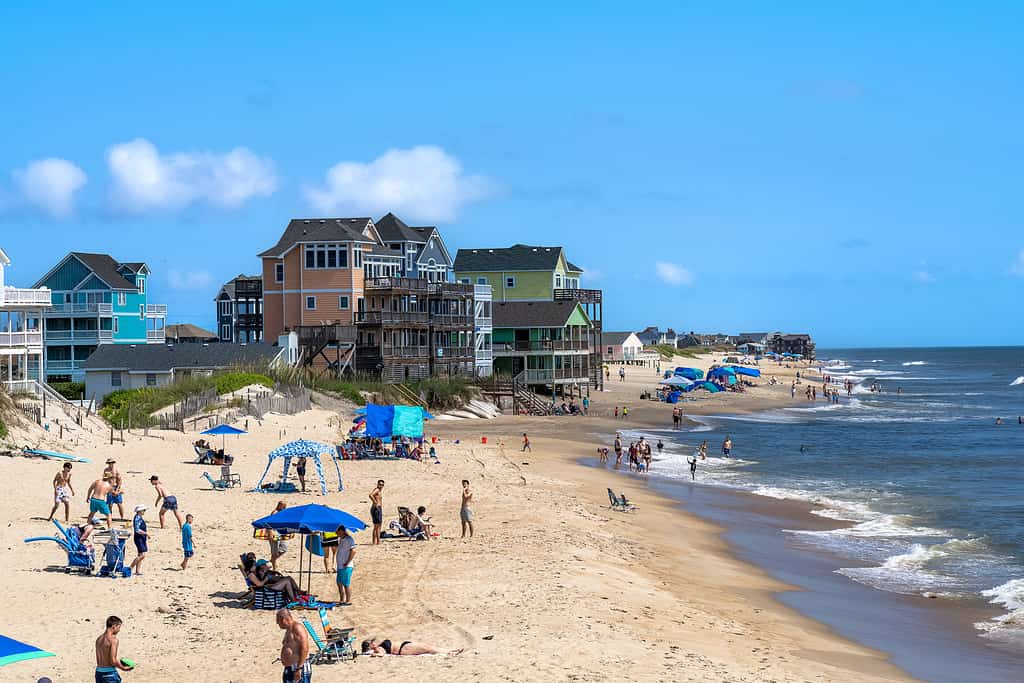
North Carolina’s coast sits at sea level, while the state’s western mountains have the highest elevation anywhere east of the Mississippi River.
©iStock.com/Kyle Little
North Carolina’s geography is split into three different regions — the Atlantic coastal plain in the east, the Piedmont Plateau in the center, and the Appalachian Mountain range in the west. While the National Oceanic and Atmospheric Administration (NOAA) describes North Carolina as having “a humid climate with very warm summers and moderately cold winters,” local climates vary substantially depending on several factors.
Elevation is one of the most prominent elements affecting temperature across the state. Along the Atlantic Coast, elevation sits at sea level. The western mountains, however, reach an elevation of more than 6,000 feet. This is the largest elevation range of any state east of the Mississippi River. Annual average temperature normals from 1991-2020 varied more than 20°F from the lowest elevation on the coast in the east to the highest points in the western mountains.
Now that we know where to find these frigid temperatures, let’s take a look at the five coldest places in North Carolina.
The 5 Coldest Places in North Carolina
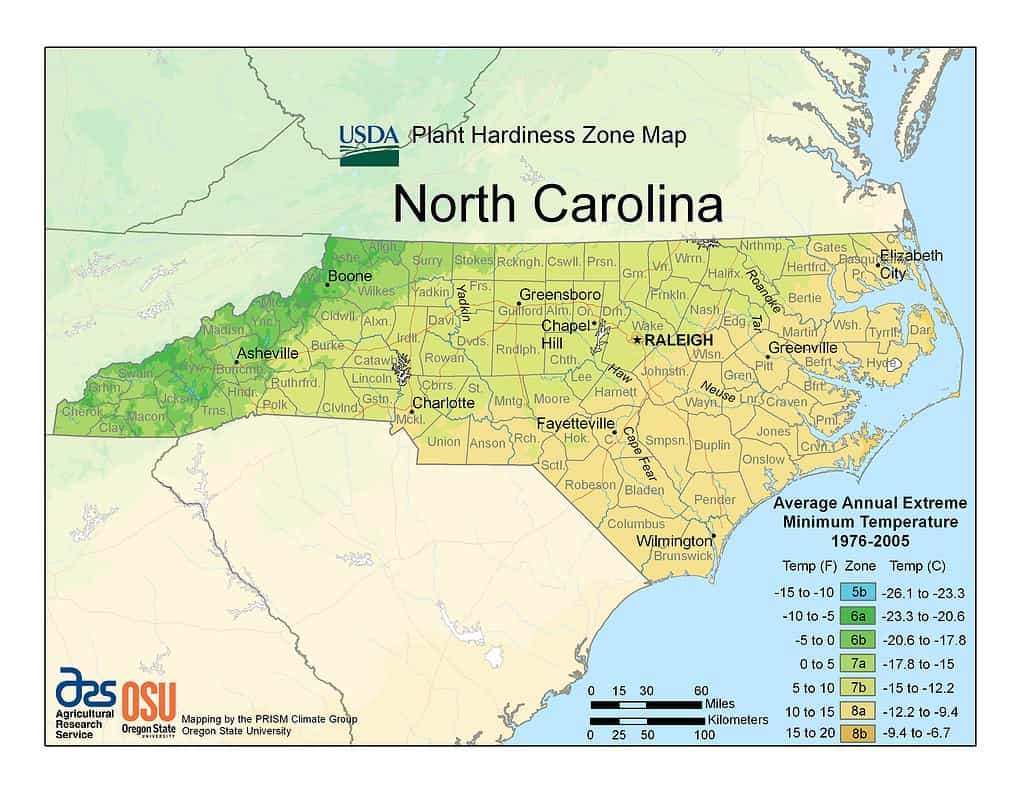
The USDA Plant Hardiness Zone map reflects that the coldest places in North Carolina run parallel with the Appalachian Mountain Range in the west.
To rank the five coldest places in North Carolina, we took many factors into consideration. Overall temperature averages, January highs, and January lows were all weighed to help you determine how many layers of clothes to pack as we travel through the stunning landscape of the Blue Ridge Mountains in North Carolina.
All five of North Carolina’s coldest places are located in the Appalachian Mountains in the western region of the state. The mountains work to moderate temperatures in the central and eastern regions by partially blocking cold air coming from the Midwest. Traveling to the coldest places in North Carolina means a journey through the broad ridges and forested slopes of the state’s slice of Appalachia. You are in for a treat as we discover the five coldest places in North Carolina that will send shivers down your spine.
#5 Ashville
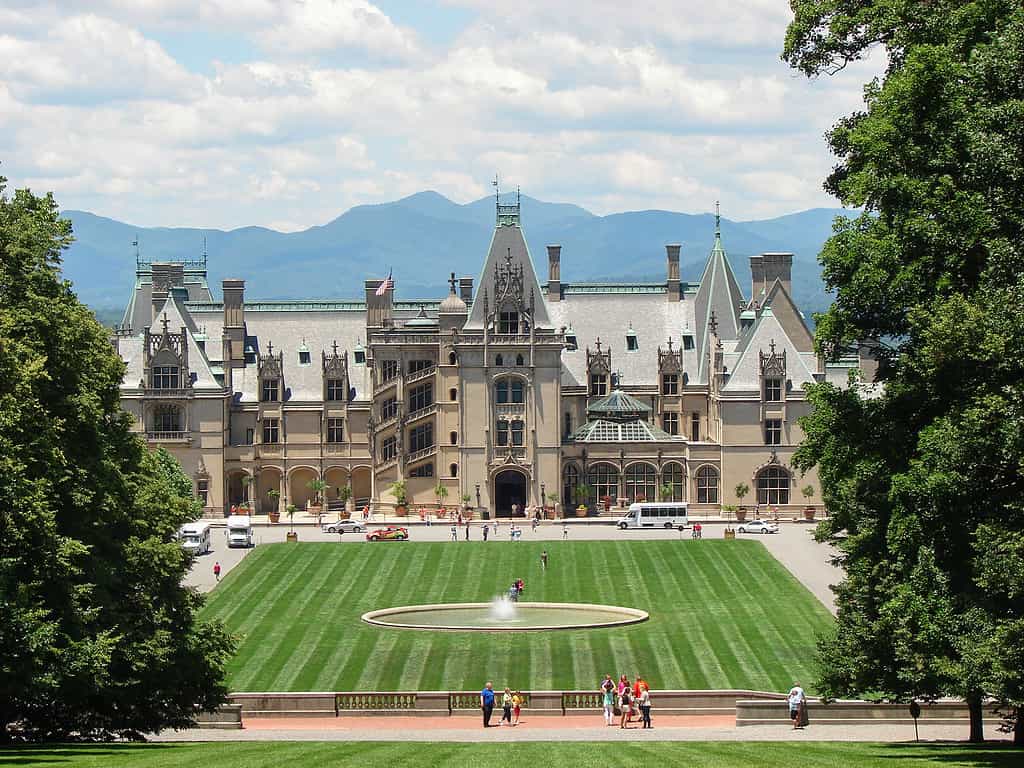
A popular tourist destination in Ashville is the Biltmore Estate, the largest home in the United States.
The thriving art culture in Ashville, NC, is one of the many reasons the city is a tourist destination. Located in western North Carolina’s Blue Ridge Mountains, Ashville is the fifth coldest place in North Carolina. Fall is the most popular season for tourism as the Ashville area has one of the longest fall color seasons in the nation. Tourists flock to the surrounding mountains to witness a sea of reds, yellows, and oranges take over the landscape as fall descends on Ashville.
When the last of the iconic leaves fall from Ashville’s trees and nature’s vibrant art show is over, cold takes over the city. In January, Ashville’s average low is 28°F and its average high is 47°F. The area doesn’t see as much snow as many of the other places on our list with just 13 feet per year on average.
This vibrant city dominated by both human and natural art has an annual low of 46°F and an annual high of 67°F. There are about 100.8 days that fall below freezing in the city. Ashville’s coldest recorded temperature of -16°F was recorded on January 21, 1985, the same day as Mount Mitchell’s record.
#4 Boone
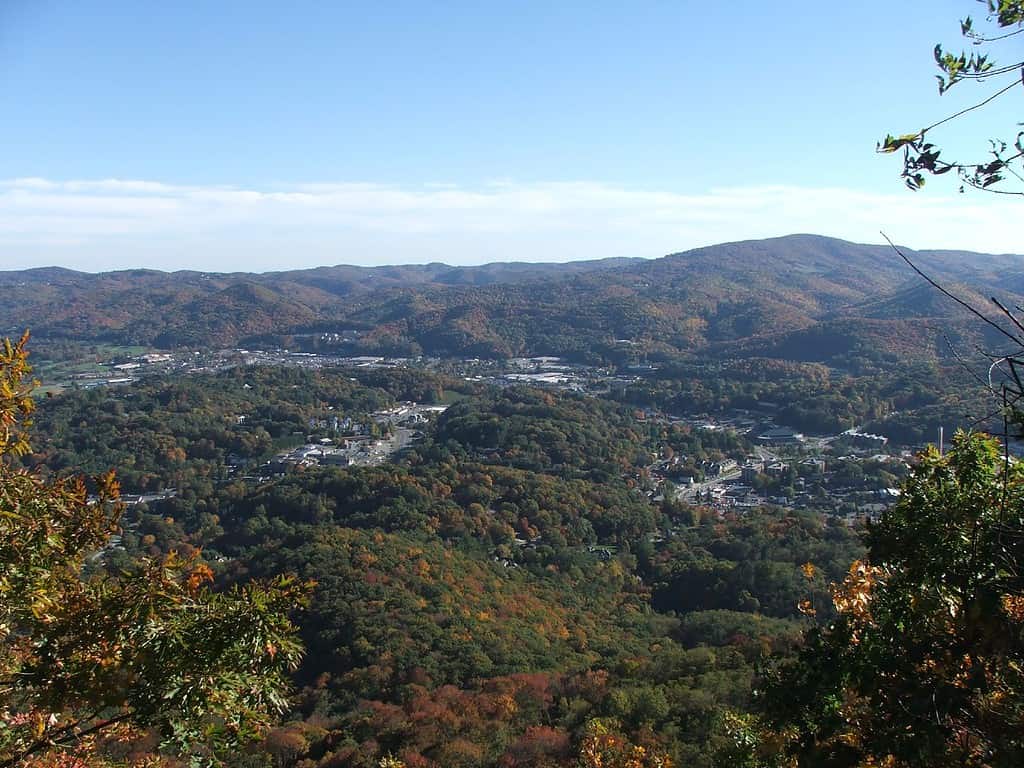
Boone, NC, has the highest elevation of any town its size east of the Mississippi River.
©Allison from Hickory, NC, USA / CC BY 2.0 – Original / License
With a population of 19,092, Boone has the highest elevation of any town of its size (10,000 people or more) east of the Mississippi River. Boone was named after the American explorer and adventurer Daniel Boone. The town’s namesake camped several times within town limits. His nephews were also members of Boone’s first church.
Another of our coldest places located in the Blue Ridge Mountains, Boone’s elevation of 3,333 feet means it has a winter climate resembling coastal southern New England rather than what is typical of the Southeast. Like much of the United States, the coldest month in Boone is January with an average temperature of 20.4°F. In contrast, Wilmington, NC, located on the state’s eastern coast, has a January low average of 38°F.
There are 115.9 days annually when the temperature falls below freezing in Boone. The city also gets 33.1 inches of snow every year. The average high in January is 42°F. The average low is 21°F.
Check out this multi-view webcam for an awesome peek at King Street in downtown Boone, NC.
#3 Mount Mitchell
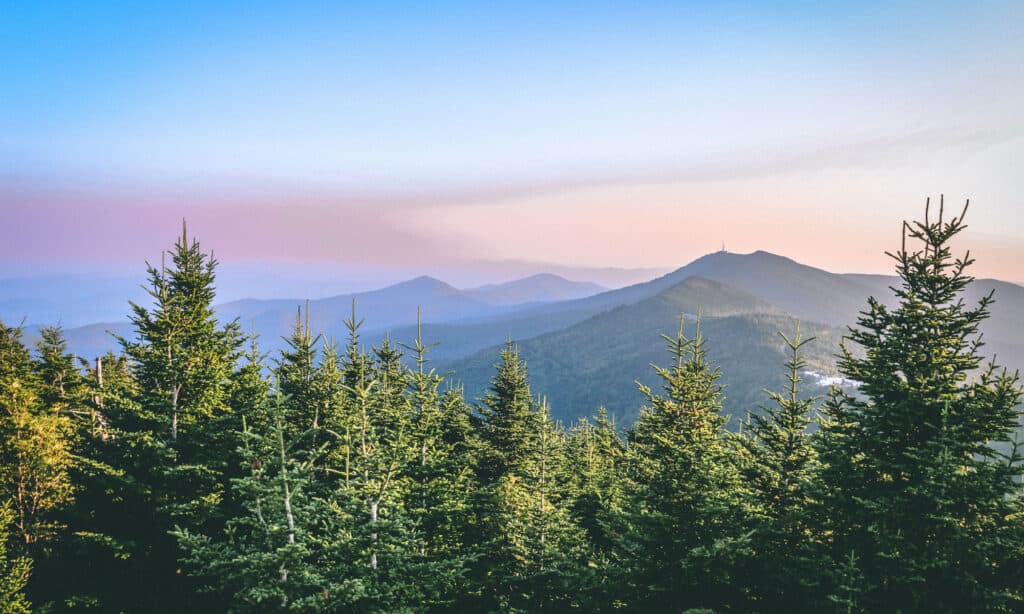
The highest point east of the Mississippi River is North Carolina’s Mount Mitchell at 6,684 feet.
©iStock.com/Frederik Flagstad
At 6,684 feet, Mount Mitchell is the highest peak east of the Mississippi River. Just 35 miles northeast of downtown Ashville, NC, Mount Mitchell State Park is located in the Black Mountain Range of the Blue Ridge Mountains in western North Carolina. Frasier furs, a tree species native only to the southern Appalachians and a holdover from the Ice Age, grow among the park’s resident red spruce, fire cherry, and yellow birch trees.
Mount Mitchell has a January low of 24°F and a high of 39°F. The peak averages about 89 inches of snow annually, although the area only received 19.9 inches in the 2022/2023 season. The lowest recorded temperature on Mount Mitchell is -34°F recorded on January 21, 1985. This is also the record for all of the state. Mount Mitchell has an average annual low temperature of 36.3°F and average annual high of 52.1°F. Baby, it’s cold outside.
#2 Banner Elk
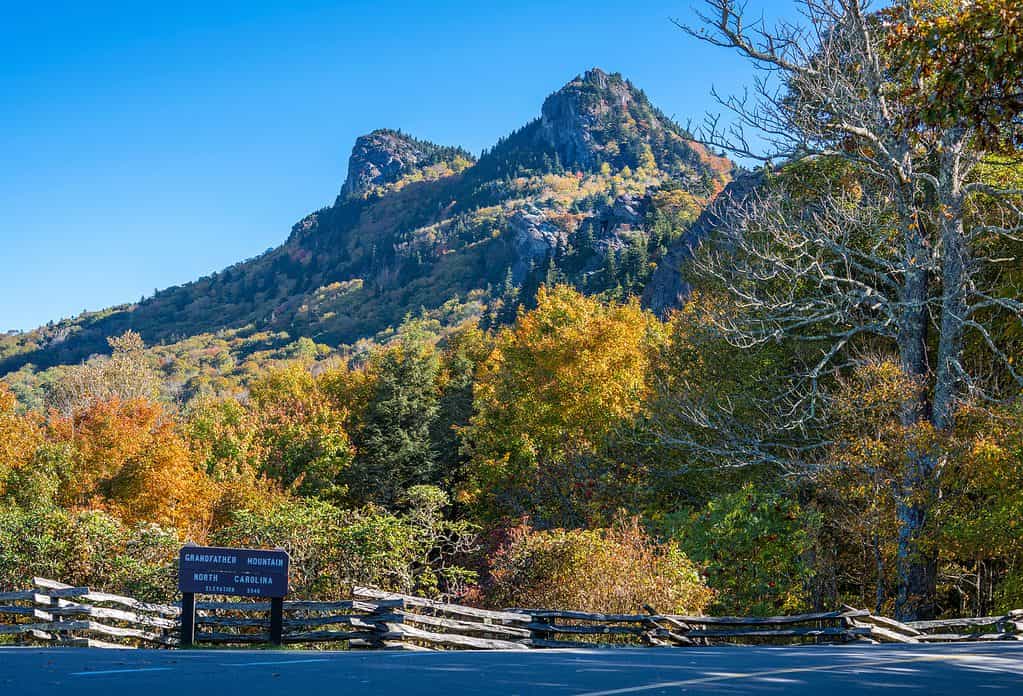
Grandfather Mountain State Park is a popular tourist destination for those visiting Banner Elk in North Carolina.
©Margaret.Wiktor/Shutterstock.com
About 35 miles north of Mount Mitchell is the popular resort town of Banner Elk. Boasting only one stoplight, Banner Elk is located in the Blue Ridge Mountains of North Carolina’s High Country between the Beech Mountain and Sugar Mountain ski areas. The town’s self-proclaimed tourism motto is “Escape. Unwind. Indulge.” With its obvious lack of traffic and rich natural beauty, that directive seems easy to accomplish.
Seeing as the area is popular with winter sports enthusiasts, Banner Elk’s status as the second-coldest place in North Carolina likely adds to its popularity. The mountain town has an average January low of 20°F and an average January high of 40°F. It gets about 31.4 inches of snow annually. However, like Mount Mitchell, the 2022/2023 winter season was the lowest snow season since 1980 with only 12.8 inches. Banner Elk’s average annual low is 38°F and its average annual high is 60°F.
#1 Beech Mountain

Beech Mountain, located in the southern Appalachian Highlands, is colder than any other town in the Southeast.
©Jun0/Shutterstock.com
Beech Mountain is not just the coldest place in North Carolina, it’s colder than any other town in the Southeast. Nestled in the southern Appalachian Highlands, winters in Beech Mountain are comparable to frigid coastal New England cold seasons. This unique four-season resort community is the highest incorporated town east of the Rocky Mountains at 5,506 feet. Beech Mountain is unique in that it only has 550 permanent residents. However, the number of part-timers swells to 10,000 in the winter.
The thousands of part-time winter residents make the trek to Beech Mountain for its pristine mountain environment, and, of course, for the cold. In Beech Mountain, you can bet on about 126.8 days falling below freezing. With an average annual snowfall of 40 inches, the slopes at Beech Mountain Resort stay busy.
Beech Mountain has an average January low temperature of 23°F and an average January high of 38°F. The average annual minimum temperature is 41°F and the average annual maximum is 57°F.
Check out Beech Mountain Resort’s webcam and get a peek at the mountain’s current conditions.
Summary of the 5 Coldest Places in North Carolina
| Rank | Place | Region | Elevation | Average Jan. High Temp | Average Jan. Low Temp |
|---|---|---|---|---|---|
| #1 | Beech Mountain | West | 5,506 feet | 38°F | 23°F |
| #2 | Banner Elk | West | 3,701 feet | 40°F | 20°F |
| #3 | Mount Mitchell | West | 6,684 feet | 39°F | 24°F |
| #4 | Boone | West | 3,333 feet | 42°F | 20.4°F |
| #5 | Ashville | West | 2,134 feet | 47°F | 28°F |
Thank you for reading! Have some feedback for us? Contact the AZ Animals editorial team.

